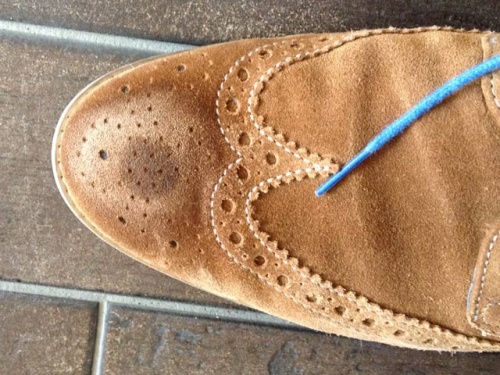Leather care instructions - Home remedies
Contents
Leather care instructions - Home remedies
Home remedies and low-cost solutions are often recommended in various magazines and websites for tackling leather care problems. In most cases, the recommended agents are based on plant or animal substances.
Leather care carries on the preservation process which began with tanning. If perishable products are used to treat the leather they will corrode either on the surface or inside the leather, thereby accelerating decay. To prevent this happening, professional leather care products contain special preservatives to guard against deterioration. Leather care tips based on perishable products without preservatives do not meet this requirement.
Collection and review of the most common leather care tips
- For cleaning leather, you can use a mixture of fat-free milk and water. Assessment: milk becomes rancid!
- Leather can be cleaned with cut potatoes. Assessment: A damp cloth does the same but without leaving behind potato juice residue!
- Water stains on shoes can be removed with sliced onions. Assessment: As with the potato, a damp cloth is enough and does not leave a smell of onion!
- Banana peel' is suitable as a leather care. The leather is smooth and shiny. Assessment: banana residues are also corrosive and do not give the necessary refatting, and the smell changes after some time!
- Fresh grease stains can be removed by instant rubbing with a little beaten egg whites. Assessment: A damp cloth or cleaning spirit is more effective and does not leave its own film.
Sunscreen is not suitable for leather care!
Basic rules when dealing with leather
There are basic rules when dealing with leather. Usually, the mistakes are made during cleaning attempts. But also, the use of incorrect care products for the particular type of leather can lead to undesirable results. Therefore, always first determine the type of leather and test all cleaning or maintenance products on a hidden area for undesired changes.
Surface-pigmented smooth leather can usually be treated with leather cleaners and leather care products. If rubbed for too long, or with excessive pressure, the leather colour layer can be dissolved. Also, solvent-based products damage the leather.
Solvent-containing products or excessive rubbing can damage the finish.
Most mistakes are made during cleaning and care of porous aniline leather, suede or nubuck. With these leathers, you have to be very careful not to make the damage worse through incorrect cleaning methods. Water is often sufficient to enlarge the stain. Always test by rubbing a drop of water in a hidden area to see whether it penetrates and darkens the surface. If this is the case, it is advised to use appropriate products and work with care.
IMPORTANT: Test all applications in a hidden area! If in doubt, reproduce the damage where it is not visible and try to clean it from there first.
Improper cleaning attempts often increase the stains. Depending on the wrong method, the spots get light or dark edges.
Additional information
- Leather care
- Leather cleaner
- Basic rules when dealing with leather
- Ecological leather care - Eco leather care
- Leather damages
Tips for leather cleaning, leather repairs and leather care
![]() -> COLOURLOCK - Leather Care Products
-> COLOURLOCK - Leather Care Products
![]() -> In German: www.lederzentrum.de
-> In German: www.lederzentrum.de
![]() -> Rest of the world: partners worldwide
-> Rest of the world: partners worldwide
leather repair - furniture leather
leather repair - leather handbags.














 a kotori web solution
a kotori web solution